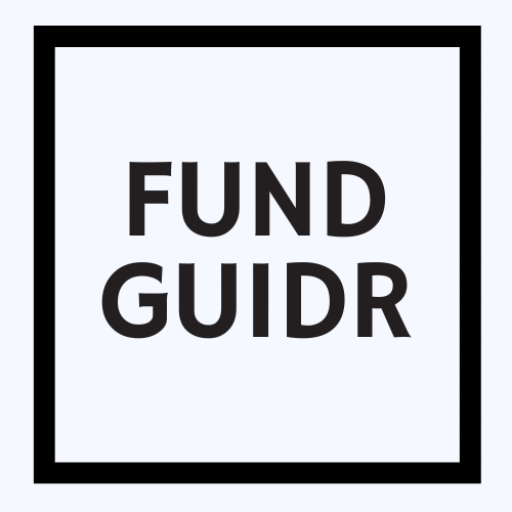Comparing European pension systems: how to plan your retirement wisely?
Ageing is an inevitable part of life, but growing old with peace of mind and dignity requires conscious planning, especially when it comes to financial security. Retirement may seem like a distant dream beyond the mountains to a young person, but the truth is that the foundations for the future are laid by the decisions you make today. But the landscape of Europe's pension systems is as varied and complex as a labyrinth, with different rules, opportunities and challenges from country to country.
How to navigate this maze? How can we ensure a more carefree and financially secure retirement, no matter where in Europe you choose to spend your career or your retirement? This article is your guide. We will help you to decipher the concept of pension pillars, take a look at the systems in some European countries and, most importantly, share practical strategies for planning your retirement wisely and consciously.

What are pension pillars?
Although the details of pension systems may vary considerably across Europe, the widespread use of the. the concept of pension pillarsto describe the different levels and sources of funding of the pension system. The most common is the three-pillar model, which is also familiar in Estonia:
- Pillar I (State pension or solidarity pension):
- Olemus: It is usually a state-run and state-guaranteed pension scheme designed to provide a basic income in old age and to protect against poverty. It is often based on the principle of solidarity: today's workers pay for the pensions of today's pensioners out of their own taxes and social contributions (the so-called "solidarity pension"). pay-as-you-go system). In some countries, it is also funded directly from the national budget.
- Challenges: National systems are under pressure in many European countries. Populations are ageing, birth rates are low and life expectancy is increasing, which means fewer workers are having to support an increasing number of pensioners. This calls into question the long-term sustainability of the system and forces countries to introduce reforms (e.g. raising the retirement age, changing indexation rules).
- Pillar II (funded employer or occupational pension):
- Olemus: This pillar relates to the employment relationship. Contributions are made either by the employer, the employee or both. Pillar II can be mandatory, semi-mandatory (e.g. in certain sectors or covered by collective agreements) or voluntary. The aim is to supplement the state pension and provide a higher income in retirement. Unlike Pillar I, Pillar II is mostly funded - your contributions are invested and the size of your pension depends on your accumulated savings and the return on your investments.
- Schemes: Defined payout schemes (DBs) are common. defined benefit), where the amount of the pension is predetermined (e.g. as a percentage of the last salary), and defined contribution (DC) schemes. defined contribution), where the amount of the contribution is fixed but the pension payout depends on the performance of the investments. The latter are becoming increasingly dominant.
- Pillar III (Individual voluntary pension):
- Olemus: This pillar emphasises personal responsibility and initiative. Anyone can voluntarily accumulate additional retirement savings through a variety of financial products: pension funds, insurance contracts (including pension insurance), investment accounts, etc.
- Advantages: Countries often try to encourage the accumulation of Pillar III contributions by offering tax incentives (e.g. income tax exemption or refund of contributions). This gives people more flexibility and control over their pension savings.
In addition to these traditional pillars, the European Union has also created a number of Pan-European Personal Pension Product (PEPP). It is a voluntary personal pension scheme that offers the possibility of pension accumulation on a uniform basis across the EU. The PEPP is particularly useful for people who work or live in different EU countries, as it is easy to "take with you" when you move from one country to another.
The complex landscape of European pension systems: overview and examples
It is crucial to understand that there is no single European pension system as such.. Each country has its own historically developed system, reflecting local socio-economic conditions, political choices and cultural specificities. However, systems can broadly be grouped under certain models.
More academically, a distinction is often made between Bismarckian systems (e.g. Germany, Austria, France) which are traditionally strongly linked to a person's length of service and income, and where the national Pillar I plays a central role. On the other hand Beveridgean systems (e.g. the UK, Ireland, the Netherlands, Nordic countries) seek to guarantee a minimum income for all residents, financed mainly by general taxation, and where Pillars II and III may play a greater role. Today, many systems are a mixture of both models.
Let's take a look at how pension pillars work in practice, using a few countries as examples:
Sweden
Swedish pension system is often seen as one of the most advanced and versatile. It consists of three parts:
- Inkomstpension (Income pension - Pillar I): Based on lifetime earnings.
- Premiepension (premium pension - part of pillar I/II): a small part of the income (2.5%) is transferred to an individual account where the person can choose up to five investment funds. This is an interesting mix of national and individual approach.
- Tjänstepension (occupational pension - Pillar II): a very important part of the total pension for most Swedish workers, covered by collective agreements.
- In addition, there is an optional Pillar III.
- Keywords: Flexibility, choice, strong Pillar II.
Germany
- Traditionally with a very strong national Pillar I (Statutory pension insurance), based on the Bismarck model. In recent decades, however, there has been an increasing emphasis on Pillars II and III to cope with demographic change.
- Pillar II covers employer's pensions (occupational pension scheme) and state-subsidised private pension schemes such as. Riester pension (targeting people on low and middle incomes) and Rürup pension (targeting self-employed and high-income earners).
- Pillar III is also growing.
- Keywords: A strong Pillar I, a growing role for Pillars II and III, public subsidies for private collection. (Further information: Deutsche Rentenversicherung)
Netherlands
Dutch pension system has repeatedly topped international rankings, thanks in particular to its very strong and well-funded occupational pensions (Pillar II).
-
- Pillar I (AOW) guarantees a basic pension for all residents.
- Pillar II is compulsory for almost all workers under collective agreements and accounts for the lion's share of pensions. These are usually defined payout or hybrid schemes managed by large sectoral pension funds.
- Pillar III is less common because Pillar II is so strong.
- Keywords: World-class Pillar II, high replacement rate (ratio of pension to final salary).
Estonia
Our three-pillar system is similar to many other European countries. Pillar I is the state old-age pension. Pillar II (mandatory funded pension) was recently made voluntary, which has led to much debate and a need for people to rethink their choices. Pillar III is voluntary and offers tax benefits. Recent reforms have increased people's responsibility and choice, but also the risks.
For reference when analysing the systems in different countries, it is worth paying attention to issues such as how much of the pension comes from which pillar, what the compulsory rates are, how the systems are funded, what the expected pension amounts are compared to previous income (replacement rate), how flexible the withdrawal of money is and what the state guarantees or supervision are.
European pension systems and their common concerns
Despite their diversity, almost all European pension systems face similar challenges:
- Ageing population and low birth rate: This is the most fundamental challenge, especially for Pillar I. Fewer taxpayers and more pension beneficiaries mean huge pressure on public pension funds.
- Sustainability of national systems: As a result, countries must constantly look for ways to ensure the viability of Pillar I - whether by raising the retirement age, increasing contributions or limiting pension increases.
- Low interest rates and investment returns: The prolonged period of low (or even negative) interest rates has been a challenge for Pillar II and III pension funds, making it more difficult to achieve the expected returns. While interest rates have risen recently, this has also been accompanied by greater economic uncertainty.
- Labour market changes: Gig-economy, platform work, frequent job changes and atypical employment relationships mean that many people may not be covered by traditional occupational pensions, or their pension accumulation may be incomplete.
- Inflation: High inflation can significantly reduce the purchasing power of pension savings and future pensions if pensions are not indexed quickly enough or if real investment returns fall below inflation.

Strategies for informed retirement planning in Europe: an action plan
Passively waiting for the state or someone else to sort everything out for you is no longer a sensible strategy. Individual responsibility for securing your future is growing.
Here are some concrete steps and strategiesthat you can use:
- Start early - the magic of compound interest: This is perhaps the most important piece of advice. The earlier you start saving for retirement, the smaller the amounts you need to set aside on a regular basis in order to achieve your goal. Compound interest (earning interest on interest already earned) works wonders over time.
- Understand your country's system thoroughly: Find out how your country's first, second and third pillars work. Find out what your rights and obligations are. Use national portals (e.g. the Pension Centre, the Social Insurance Board) and calculators to predict your future pension.
- Set clear goals for yourself: How much income do you really need in retirement? This is very individual and depends on lifestyle, expected expenses (including healthcare), hobbies, etc. A good rule of thumb is to aim for around 70-80% of your pre-retirement net income, but this can vary.
- Maximising your Pillar II and Pillar III options:
- If your country has Pillar II, then check the conditions. If it is useful and suitable for you (given your age, risk tolerance, investment history), then participate actively. This means making an informed choice (not leaving it to chance) and, if possible, increasing your contributions. Estonia has recently made such an option possible.
- Use III samba opportunities and tax incentives. Choose the products that are right for you - be it pension funds, insurance solutions or direct investment. in shares and bonds investing through an investment account. Remember that diversification and a long-term perspective are important here too.
- Spread the risks (don't put all the eggs in one basket): This applies to both Pillar II and Pillar III investments. Don't put all your pension savings in one fund, asset class or region. The closer you get to retirement age, the more conservative your portfolio could become.
- Be aware of costs: Compare the management fees and other costs of different pension funds and investment products. Even a small difference in fees can have a big impact on your long-term bottom line.
- Think cross-border if it is relevant to you:
- If you plan to work or live in another EU country in the future, make sure you find out how this will affect your pension rights. The EU has rules for coordinating social security systems to help ensure that periods worked and rights accrued in different countries are taken into account.
- Find out at PEPP (Pan-European Personal Pension Product) options if you're a mobile worker and want a flexible pension solution that goes with you anywhere in the EU.
- Review and adjust your pension plan regularly: A pension plan is not a set in stone document. Your circumstances, income, goals and the economic environment change. That's why it's a good idea to review your pension plan at least once a year (or when major life changes occur) and make any necessary adjustments.
- Keep brushing yourself: Financial markets, investment products and pension systems are in a constant state of flux. Be curious, read, learn and seek advice from trusted sources. The more informed you are, the better decisions you can make.
Summary: your pension, your responsibility, your opportunity
Europe's pension systems can seem daunting and complex at first glance, but with awareness and planning it is possible to navigate them successfully. It is clear that public pension systems face major challenges and the role of individual responsibility in securing one's future is constantly growing.
Don't put off thinking about retirement until far into the future. Every step you take today to secure your financial well-being is an investment in your carefree retirement. Take advantage of the opportunities available, be proactive and take responsibility for your future into your own hands. This is your chance to build the retirement you deserve.
